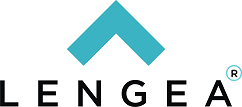California Assembly Bill 890 (AB 890), signed into law in 2020, is reshaping how nurse practitioners (NPs) can practice in California. The law provides for a phased pathway to independence, and, beginning in 2026, California will formally recognize NPs with full practice authority.
For healthcare organizations and NPs alike, now is the time to understand how this transition works and what it means for staffing, compliance and patient care.
AB 890 Established Two New NP Categories
- 103 NP: NPs who have completed at least 4,600 hours (or three years) of full-time clinical practice in California may apply for 103 NP certification. A 103 NP may practice without standardized procedures, but only in group settings where a physician also practices.
- 104 NP: After three years of practice in good standing as a 103 NP, an NP may apply for 104 NP certification. This designation grants NPs full practice authority, allowing NPs to practice independently outside of group settings, as long as they remain within the population focus of their national certification. Even with full authority, 104 NPs must still consult, collaborate and refer as clinically appropriate.
NPs seeking 103 or 104 NP certification must be certified in one of the following population foci, which will inform their scope of practice:
- family/individual across the lifespan;
- adult gerontology (primary care or acute care);
- neonatal;
- pediatrics (primary care or acute care);
- women’s health/gender-related; and
- psychiatric-mental health across the lifespan.
Updates Since AB 890
The California legislature and the California Board of Registered Nursing (BRN) have refined the full-practice pathway since the passage of AB 890. California Senate Bill 1451 (effective January 1, 2025) introduced several clarifications:
- Certain clinical experience earned before January 2021 may now apply toward the 4,600-hour threshold for 103 NP eligibility.
- NPs are no longer required to provide verbal notice that they are not physicians; a written notice is sufficient. Spanish-language disclosures no longer need to use the previously mandated phrase.
- Direct patient care hours from a Doctor of Nursing Practice program may be applied toward the three-year practice requirement for 104 NP eligibility.
What This Means for Med Spas
Under the new framework, NPs certified in “Family/Individual” or “Adult-Gerontology (Primary Care or Acute Care)” are best positioned to provide aesthetic and dermatological treatments as 103 or 104 NPs. These population foci cover care for adults across the lifespan, encompassing cosmetic procedures typically sought by adult patients. In the med spa setting, an NP with the above certifications and 104 status may generally offer aesthetics services such as Botox, fillers, laser procedures, and dermatology-based cosmetic interventions, provided the NP is competent and trained in those procedures. NPs in categories such as neonatal, pediatrics, women’s health, or psychiatric-mental health would likely be outside their population focus if they were to provide aesthetic services, and doing so could lead to regulatory discipline.
What Employers Should Consider
The new classifications for 103 and 104 NPs present both opportunities and operational considerations:
- Reduced oversight burdens: Unlike traditional NPs, 103 and 104 NPs are excluded from compliance with California’s supervision limits on advanced-practice clinicians.
- Billing and reimbursement implications: Services provided by 103 NPs may need to be billed under the NP’s own NPI, which, in some cases, results in lower reimbursement compared to billing “incident to” a physician.
- Operational changes: Moving away from standardized procedures may shift how responsibilities are assigned, how patients are managed and how documentation is handled.
Why Some NPs Are Reaching 104 Status Before 2026
When AB 890 passed, many assumed the first 104 NPs would not be recognized until 2026. While that remains the general timeline, the law allows NPs to count qualifying prior clinical experience toward the transition-to-practice requirement.
If an NP has already accumulated 4,600 hours of clinical practice in California within the five years prior to their 103 NP application, those hours may be applied toward eligibility. As a result, some NPs with significant prior experience have already achieved 104 NP status in 2025, ahead of schedule.
This early wave of approvals is a milestone for California, with the broader NP community continuing to transition in the year ahead.
Looking Ahead to 2026
By 2026, nearly two-thirds of California’s NPs are expected to qualify for full practice authority. With the first wave of 104 NPs already here, providers and organizations should act now to prepare for this new category of independent practitioners.
Action Items for NPs and Med Spas
Our team is following these developments closely and can assist you with these transitions. Key points to focus on are:
- Ensuring you understand the requirements to achieve 103 or 104 certification.
- Ensuring your population focus aligns with the services you’re performing.
- If you are an employer, revisiting operational flow, supervision requirements and expanded-scope considerations for your NPs should be done and any necessary changes made.
- If you are an employer, review employment agreements, professional services contracts and malpractice coverage to ensure alignment with the broader scope of 103 and 104 NP practice.
At Lengea we are happy to provide further insight and support to you as we move toward a full-practice authority model.


